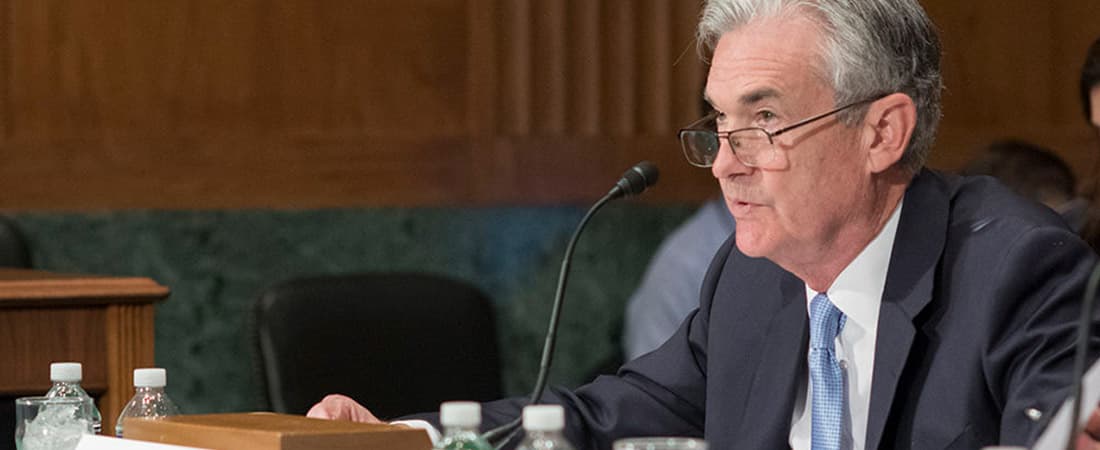Mar 22, 2018
Why Does the Fed Keep Hiking Interest Rates?
On Wednesday, the Federal Reserve announced it will raise its benchmark interest rate again.

Get ready for higher interest rates–yet again.
On Wednesday, the Federal Reserve announced it will increase its benchmark interest rate to between 1.5% and 1.75%, and suggested rates would go up at least two more times in 2018.
This is the fourth time the Fed–which is the central bank of the U.S.–has raised interest rates since 2017, and it’s the sixth time since the financial crisis, which began in 2008. The move was widely expected, according to reports, and it further signals the confidence the central bank has in the economy
“The labor market has continued to strengthen and that economic activity has been rising at a moderate rate,” the Fed said in a statement on Wednesday. “Job gains have been strong in recent months, and the unemployment rate has stayed low.”
Newly appointed chairman of the Fed, Jerome Powell, announced the news in his first meeting with other central bankers. Powell was appointed in October to replace former chair Janet Yellen.
How does the Fed increase interest rates?
The central bank is increasing a rate called the federal funds rates, which is a short-term rate that it charges banks to borrow and lend money to one another. The federal funds rate forms the basis of other interest rates, such as for credit cards and mortgages.
The Fed has been slowly increasing the federal funds rate for the last two years as economic growth has gathered steam. In December, it raised this rate to between 1.25% and 1.5%. In June, it raised this rate to between 1.0 and 1.25%.
The increases follow a seven-year period when the central bank left interest rates at or below 0%, to stimulate the economy following the recession. Officials hoped lower rates would prompt consumer spending and bank lending, among other things.
Back, in 2015, Federal Reserve Chairwoman Janet Yellen made news when she announced the bank would increase the federal funds rate to a range between 0.25% and 0.5%.
The federal funds rate is sometimes referred to as the overnight rate, because banks conduct the lending and borrowing after daytime business hours.
Increasing interest rates and credit cards
A higher federal funds rate is likely to make it more expensive for consumers to borrow money for mortgages, charge on credits cards, and take out automobile or student loans, among other things.
And if you’re carrying a credit card balance, the increase in interest rates could be of particular concern. That’s because credit cards have something called a variable rate. A variable rate changes to reflect increases and decreases in interest rates. (That’s in contrast to a fixed interest rate, which as its name implies, stays the same no matter what.)
If you’re carrying a credit card balance, now might be the time to consider paying it off, or reducing it significantly if you can.
“Variable rate debt is where you are most susceptible as interest rates rise,” Bankrate analyst Greg McBride recently told CNBC.
Credit card debt is at a record high in the U.S., totalling more than $1 trillion in 2017.
Although most mortgage rates are fixed, some mortgages carry variable rates as well. These are called adjustable rate mortgages, or ARMs, and rates on these mortgages also rise when interest rates increase, making it more expensive for homeowners.
Higher interest rates aren’t always a bad thing, however: They can also lead to increased rates for bank savings accounts, for example.
What does the Federal Reserve do?
The Federal Reserve is the central bank of the U.S. It oversees 12 district banks, which together are responsible for the monetary policy of the U.S.
The Fed’s mission is to oversee the health of the nation’s financial system. It attempts to keep the economy strong and growing by enacting policies to maintain low inflation and healthy employment levels. It does this primarily by adjusting interest rates, and lending money to the nation’s banks.
Related articles

financial-news
Apr 07, 2025
Investing During Volatile Times

financial-news
Apr 03, 2025
How to Stay the Course Through Tariffs and Turbulence

financial-news
May 15, 2024
Rebirth of the meme stock craze? 5 brutally honest reasons why you shouldn’t be buying, despite the hype

budgeting
Jan 09, 2024
9 ways to celebrate financial wellness month

financial-news
Nov 09, 2023
What is a Recession?

financial-news
May 15, 2023
The Stash Way: Invest Regularly
By using this website you agree to our Terms of Use and Privacy Policy. To begin investing on Stash, you must be approved from an account verification perspective and open a brokerage account.
